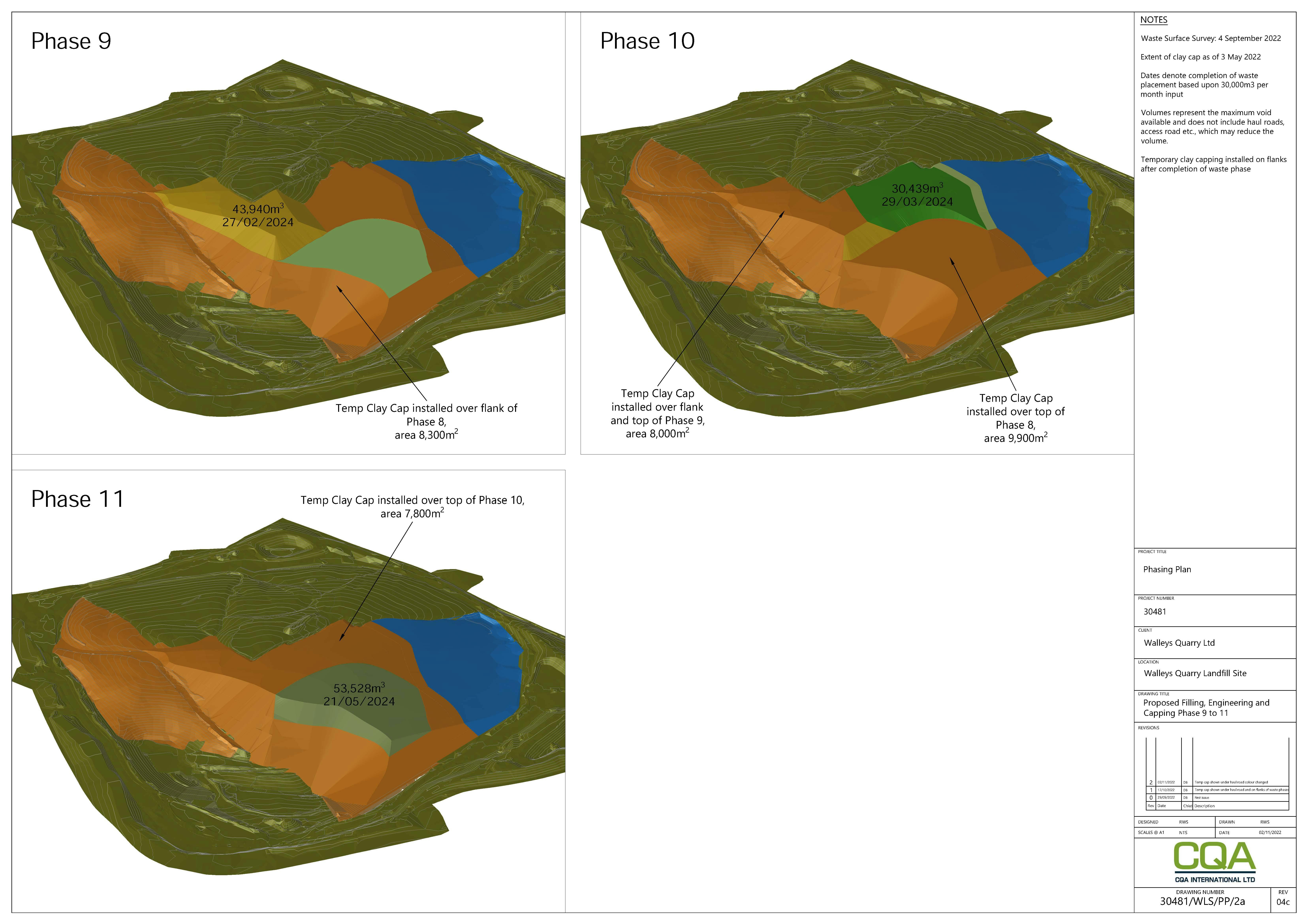Our Strategy
Our Plan to reduce hydrogen sulphide emissions sets out our strategy with the three key objectives underpinning it:
- contain landfill gas emissions from the site
- capture as much of that gas as possible
- destroy it by combustion through the gas utilisation plant (GUP)
This Plan summarises the actions completed, provides evidence of progress to date in the form of monitoring results and describes ongoing and future measures needed.
Measures that we have required Walleys Quarry Landfill Site (WQLS) to implement, including smaller tipping phases, effective capping, installation of new gas wells and improved infrastructure have succeeded in:
- Increasing gas extraction from 1822m3/hr in January 2021 to 2854m3/hr by March 2023.
- Reducing the volume of hydrogen sulphide (H2S) in landfill gas from 6400 parts per million (ppm) in June 2021 to 1510 ppm by March 2023.
- Reducing monthly average concentrations of H2S around the site, to levels below the long-term health-based guidance value.
You can see greater detail of our Plan and progress in its delivery by referring to the Plan itself. In brief, measures required to deliver the strategy include:
Contain
Since 2021 we have instructed WQLS to implement a series of measures to reduce the landfill gas escaping from the site. In March 2021 we served an enforcement notice on WQLS requiring it to install permanent capping on Phase 1 and temporary capping on Phase 2 of the tipping phases by 30 April 2021. This was to prevent fugitive emissions and increase the efficiency of the gas management system. This meant that a greater volume of the waste mass in the landfill was capped, preventing the escape of landfill gas and facilitated its collection by the gas extraction infrastructure.
In October 2021 we required WQLS to produce a revised landfill phasing plan, including reduction to the size of planned landfill cells. The revised Capping and Phasing Plan requires the next three landfill phases to be significantly smaller than Phase 1, with Phases 2, 7, and 8 (the next areas to be capped) approximately 40% to 47% smaller than Phase 1.
WQLS completed capping of Phase 1 (over 26,000m²) in August 2022. Phase 2 was also completed and a clay temporary cap placed on the inner flank in August 2022. This temporary cap is almost the equivalent of a permanent cap in terms of performance in reducing fugitive emissions from the landfill.
We have seen improvements in the air quality monitoring data from our Mobile Monitoring Facilities (MMFs) as well as the gas extraction rate and the fraction of Hydrogen Sulphide (H2S) within landfill gas.
 |  |
Before and After Temporary Clay Cap on Phase 2
Capture
New and improved gas wells have been installed to improve gas capture from the waste in the landfill. WQLS has installed 84 wells since the beginning of 2021 which has meant an increase in the amount of gas captured by over 1000m3/hr. Waste deposits have now commenced in Phase 3 and a management plan is in place to capture the gas which will be generated by this phase of waste deposits.
We also continue to receive and review real-time telemetry data from the landfill gas contractor. By analysing the data, we can confirm the operational status and performance of site gas management equipment and identify any issues which need to be rectified.
Destroy
After gas is captured, it needs to be safely and effectively destroyed. Gas is either directed to a GUP (to generate electricity) or destroyed by one of the site flares. There are now two high-capacity flares on site with a capacity of 5000m3 per hour.
In October 2021 the gas collection system was redesigned to separate landfill gas wells to manage high H2S concentrations, which may be taken directly to flare to avoid damage to engines. This separation process was used between October 2021 and January 2022. The separation process has not been used since January 2022, due to reduction in H2S levels, though the flare remains on standby.
Reviewing the real-time telemetry data provided by the landfill gas contractor enables us to verify the effective operation of the engines and flares. This confirms the operational status and can identify any issues which need to be rectified.
We required WQLS to review its back-up power supply to ensure uninterrupted gas treatment. A back-up generator has now been deployed as a permanent arrangement to ensure uninterrupted power supply.
Waste acceptance
From December 2021 we have carried out audits at waste management sites identified as sending waste to the site. We have required waste producers to implement procedures to reduce the concentration of sulphates in waste sent to the site.
In May 2022 we served an enforcement notice on Walleys Quarry Limited (WQL) requiring them to make improvements to its waste acceptance procedures. Revised procedures were agreed in July 2022 and we were able to withdraw the enforcement notice.
Ensuring effective implementation of the strategy
We are committed to ensuring that WQLS continues to take all appropriate measures to continue to achieve and sustain levels of H2S and odour at or below levels advised by UKHSA. We will continue:
- our programme of announced and unannounced inspections
- off-site odour assessments
- work to prevent inputs of gypsum-bearing waste
We will continue to regulate the site in accordance with our Enforcement and Sanctions Policy and by reference to the Regulators’ Code. You can read more about how we assess permit compliance here.



